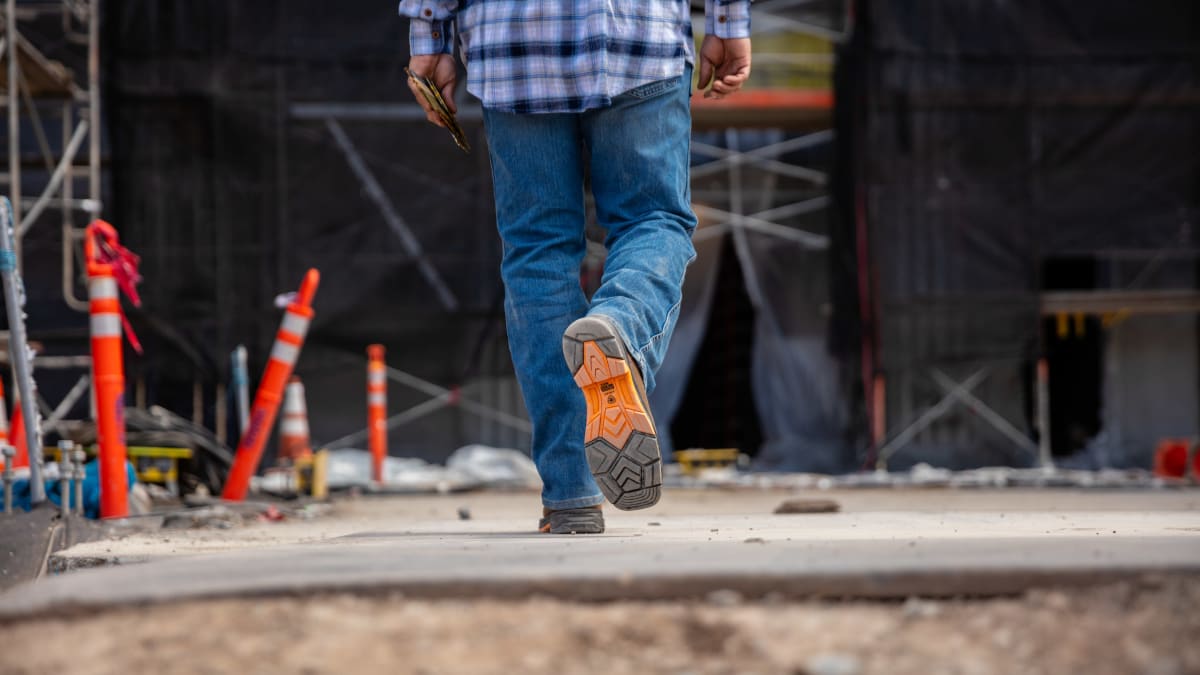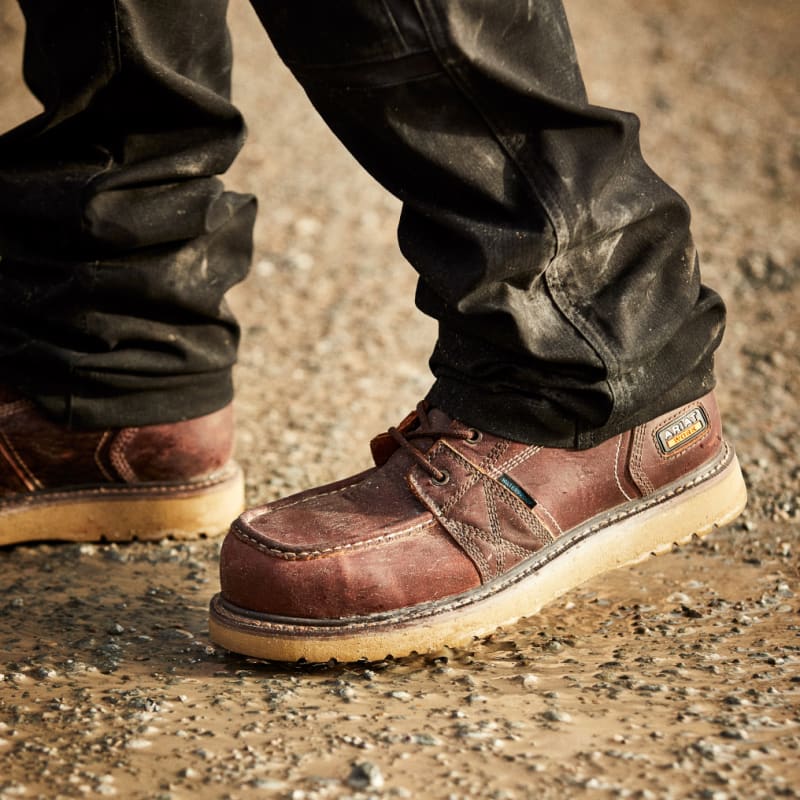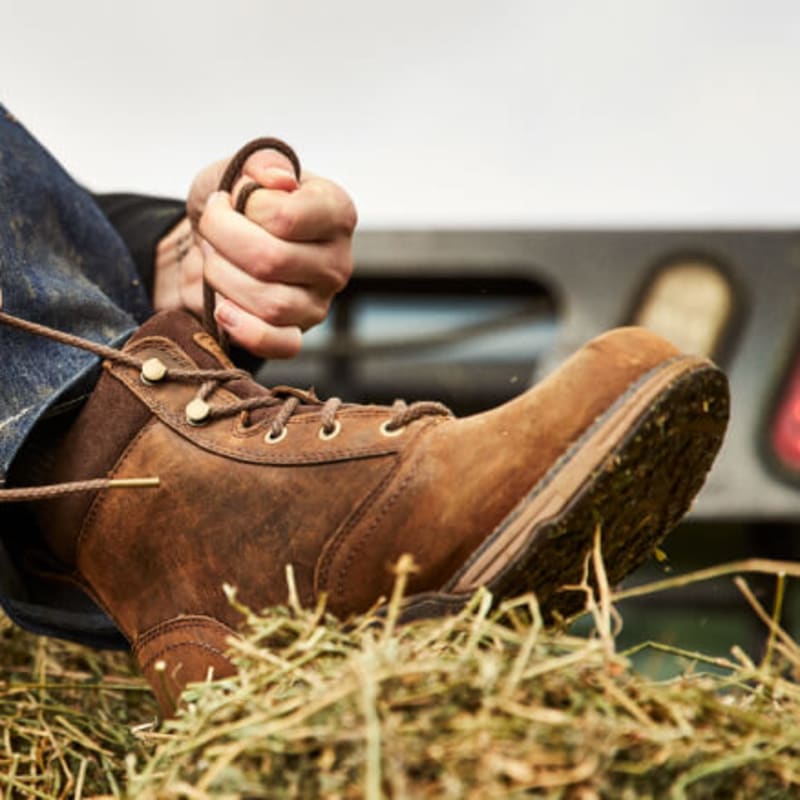)
How to Break in Work Boots
Breaking in a new pair of work boots shouldn’t be painful. They should feel good, but you shouldn’t immediately wear them all day on the job. Before thoroughly enjoying your new boots, you must break them in.
Leather work boots are built tough, and breaking them in is a normal part of the wear cycle. They’re constructed with stiff, durable materials that require several days of use to settle into a comfortable shape and fit. If you jump right into long days in your new boots, your feet may suffer from blisters, rubs, or pinching. To avoid that, here are our most efficient tips and general advice for how to break in work boots fast and pain-free.
Choosing New Work Boots
Start by choosing a pair that fits. Whether you’re upgrading your current work boots or trying something new, it takes time to adjust to how new boots feel. Choosing a quality pair that fits correctly will increase comfort and will help them last longer.
The most comfortable work boots should fit your needs and your feet. For most work boots, your foot should feel snug through the widest part without feeling tight or cramped in the toe box. Work boots like the Men's Turbo Waterproof Work Boot or Women's Macey Work Boot have enhancements like padding around the ankle that can improve fit and minimize friction.

Top Tips for Breaking in Work Boots
1. Wear for Short Periods Around Town or at Home
Once you’ve found a replacement pair, don’t get rid of your old boots yet! If wearing work boots on the job right away is a top priority, bring both your new and old pair and switch between the two. But in the meantime, doing household chores that require bending and kneeling is a great way to flex and break in the sole of your new work boots. Patience is key: you will regret it if you skip breaking them in and immediately wear them to work. Stretching the process out over a few days can make the process painless.
2. Stretch with Thick Socks
If you’re not a fan of the restricting feel of new leather, you can wear a pair of extra-thick socks (or two!) with your boots to passively expand the fit when you’re off the clock. Make sure the socks are tall enough to fit over your calf or are at least a couple of inches taller than the top of your boots. If you’re breaking in a lace-up style like the WorkHog 8”, tightly secure the laces to encourage the leather to stretch while you walk around or relax. With any new boot, if you experience pain or ongoing irritation after a week or two of wear, you may need to reevaluate the fit or your chosen insole.
3. Condition and Oil to Soften Your New Work Boots
Expedite the break-in process by strategically applying a conditioner or oil. Conditioning troublesome areas of your boots that are pinching or stiff helps to soften the leather.
How long does it take to break in work boots?
Some people use water to break in boots quickly, but this is generally not the best way to break in new work boots. Be cautious of “quick fixes” like the water method, shoe stretchers, and other accelerators, like applying rubbing alcohol, which claims to break in boots overnight. No matter how you slice it, this process takes time. While some hacks might work, they risk damaging or deteriorating the integrity of your new boots. Be patient; in less than a week, they will feel like they were made just for you.
If you’re still shopping for affordable, high-quality men’s work boots or versatile and tough women’s work boots, you can browse our collection of performance footwear online or visit an Ariat retailer near you.
Questions about Breaking in Your Work Boots
Are work boots supposed to be tight at first?
Work boots should feel snug but not overly tight. Your toes need space to move freely, while the rest of the boot should fit securely without pinching. It's important to ensure that there's enough room to accommodate thicker boot socks, which can provide extra cushioning and help stretch the leather during the break-in process.
What is the fastest way to break in new work boots?
The fastest way is to wear them in short intervals with thick socks, gradually increasing wear time. Wear them around the house or on shorter walks so the leather can loosen up without stressing your feet. Applying conditioner or oil to soften stiff areas can also help speed up the process.
How can I make my work boots softer?
Applying a leather conditioner or oil will soften the material, making your boots more pliable and comfortable for everyday use. While this can help reduce stiffness, it's not always necessary—some boots will naturally soften over time as you wear them. However, conditioning can speed up the process if you're looking for quicker comfort.






